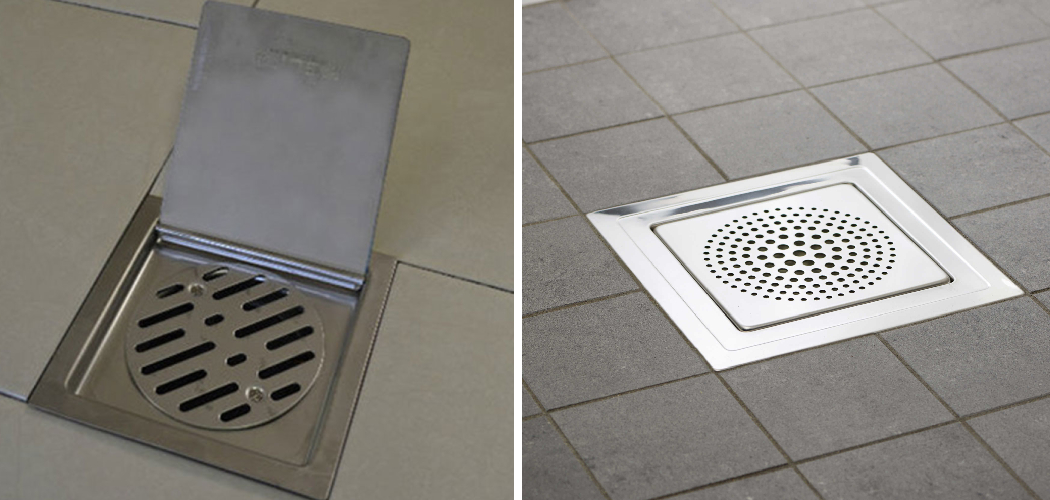Floor drains tend to be the most susceptible to clogging and, when blocked, can cause various issues, from flooding to foul odors. If you have standing water in your floor drain, unclog it immediately.
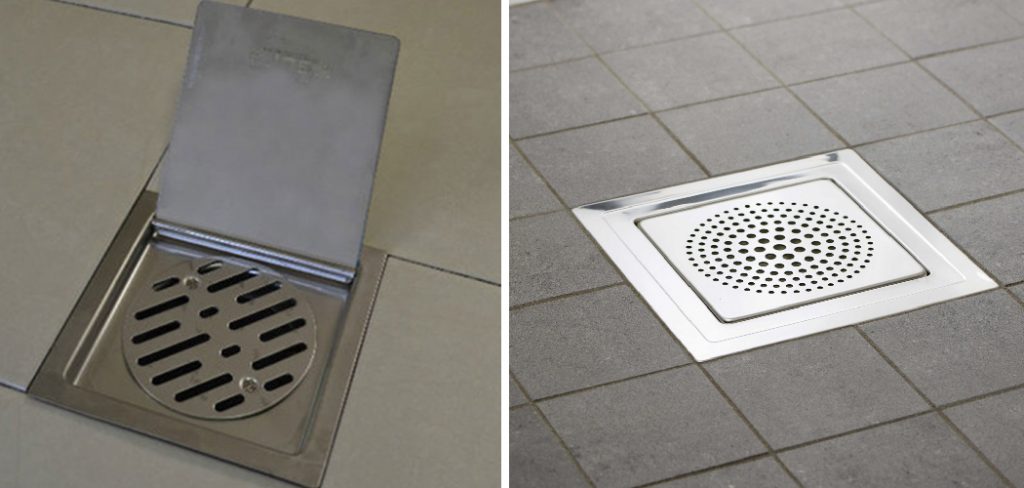
The main advantage of unclogging a floor drain with standing water is the simplicity and speed of the process. It’s much easier to identify the clog when standing water is present in the pipe instead of attempting to trace and diagnose the blockage when all you have are dry pipes. This makes finding and clearing out the clog significantly faster and more straightforward. In this blog post, You will learn how to unclog a floor drain with standing water.
Tools You Will Need
- Waterproof gloves
- Rags or towels
- Plunger
- Bucket or bowl
- Wire hanger
- Long screwdriver
- Drain snake
- Wet/dry vacuum
- Chemical drain cleaner
- Hot water
- Old rags or towels (for cleanup)
- Eye protection
Once you have the necessary items, you can begin unclogging your floor drain with standing water. First, put on gloves and safety goggles.
Step-by-Step Processes for How to Unclog a Floor Drain With Standing Water
Step 1: Inspect the Drain
Before attempting to unclog the drain, inspect the drain and its surroundings. Check for any debris or buildup blocking it, including soap, hair, dirt, grease, and foreign objects. To start unclogging the floor drain with standing water, fill the plunger with water and plunge vigorously. If the water is deeper, use a long-handled plunger to reach the bottom of the drain.
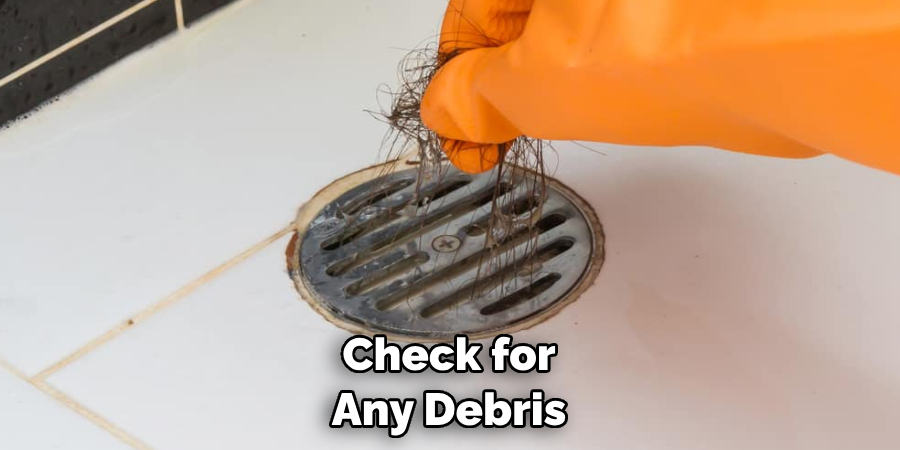
Step 2: Use Boiling Water
Boiling water can help break up the clog, so pour a pot of boiling water directly into the drain and wait for a few minutes. Using baking soda and vinegar, you can also unclog a floor drain with standing water. Mix equal parts baking soda and vinegar in a bowl or cup. Pour the mixture down the drain and wait for an hour. After an hour, flush the drain with hot water.
Step 3: Use Wire Hangers
If all these methods fail, use a wire hanger to unclog the drain. Unfold one end of a hanger to create a hook shape and use it to pull out any clogs or debris. If the clog is particularly stubborn, you may need a drain snake. This tool consists of a long coil of metal that you can insert into the drain and manually remove any blockage.
Step 4: Use Chemical Drain Cleaners
Chemical drain cleaners are powerful but acidic products that can be used to unclog drains. Read the instructions carefully and only use these products if all other methods have failed. If you’re dealing with standing water, try using a shop vac to suction out some of the water. This will make it easier to get at the clog without dealing with all the water.
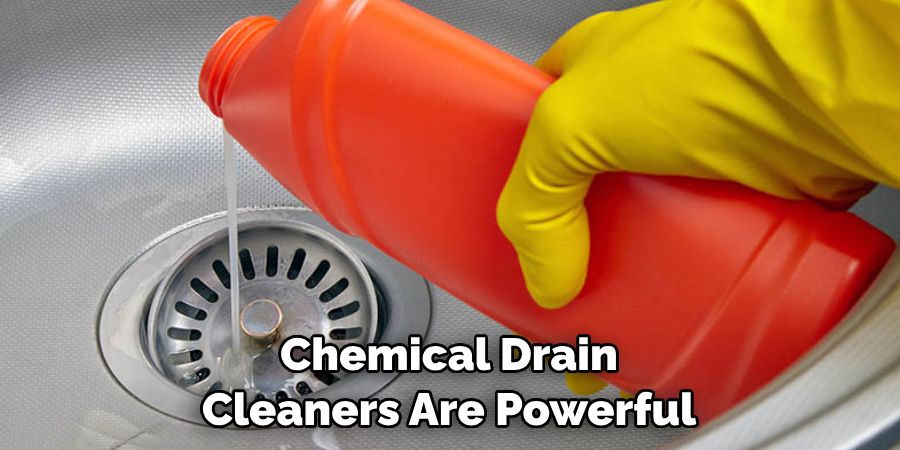
Step 5: Contact a Professional Plumber
If you’ve tried everything and nothing seems to work, it may be time to contact a professional plumber. They can inspect your drain and use more advanced tools to clear blockages. Finally, once the clog has been cleared, you should take preventive measures to ensure it doesn’t happen again. Clean your drain regularly, and consider adding a drain strainer or grille to prevent any foreign objects from entering the pipe.
Following these steps to unclog a floor drain with standing water, you can easily restore your drains to working order.
Tips for How to Unclog a Floor Drain With Standing Water
- Wear gloves and safety glasses when handling harsh chemicals or sharp objects during unclogging.
- Place a bucket underneath the drain to catch any water that may overflow and any debris removed from the clog.
- Secure a cloth around the drain so no harmful chemicals will splash onto you.
- Start by using a plunger to attempt to clear the clog.
- If the plunger does not succeed, use an auger or flexible rod with a crank handle.
- If neither of these methods works, pour boiling water into the drain in short intervals and check for blockages after each pour.
- You may need to use a strong chemical cleaner as a last resort. Read the instructions carefully and wear the appropriate safety gear before using.
These tips will help ensure unclogging your floor drain with standing water is as safe and successful as possible. Taking proper precautions when dealing with potentially hazardous chemicals and materials is important.
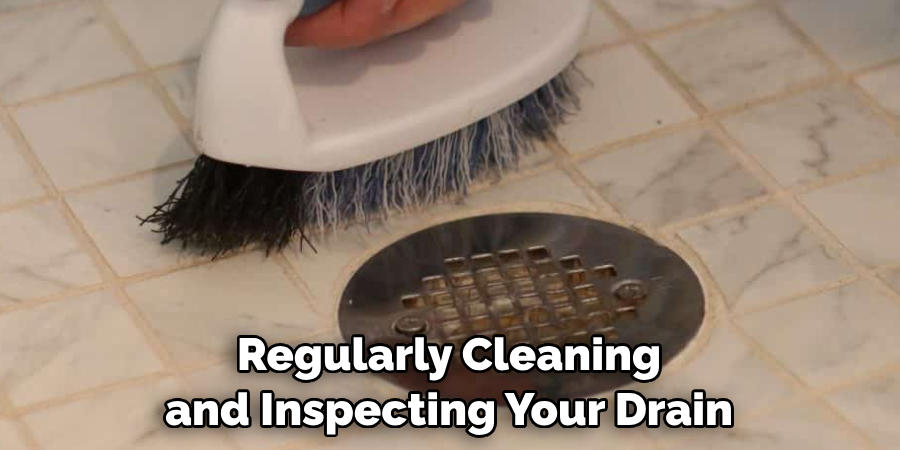
Is It Possible to Prevent Future Clogs in the Same Area of My Home or Business?
Yes, preventing future clogs in the same area of your home or business is possible. The best thing you can do is take preventive measures against clogging.
This includes regularly cleaning and inspecting your drain lines for debris buildup, making sure that all grease and food waste is properly disposed of in a garbage can instead of going down the drain, and using filters or screens to prevent hair and debris from getting into the drain, and avoiding using chemical cleaners as they can corrode your pipes.
If you have an older pipe system, consider replacing them with newer PVC or ABS pipes that are better equipped to handle debris without clogging. Additionally, having a regular maintenance schedule for your drains can help ensure they stay clear and free-flowing.
Prevention is key to avoiding clogs in your home or business’s floor drain. Regular cleaning and inspections, proper disposal of food waste, using filters or screens for debris, and preventing chemical damage are all essential steps to keep your drains unclogged and running smoothly.
Are There Any Risks or Safety Concerns You Should Be Aware of When Unclogging a Floor Drain With Standing Water?
When unclogging a floor drain with standing water, you should be aware of several safety concerns and risks. First and foremost, always protect yourself from electrical shock by disconnecting the power to any electrical equipment or appliances near the floor drain (such as washing machines). Additionally, wear protective clothing, such as rubber gloves and goggles, and eye protection if you use chemical or acid-based cleaners.
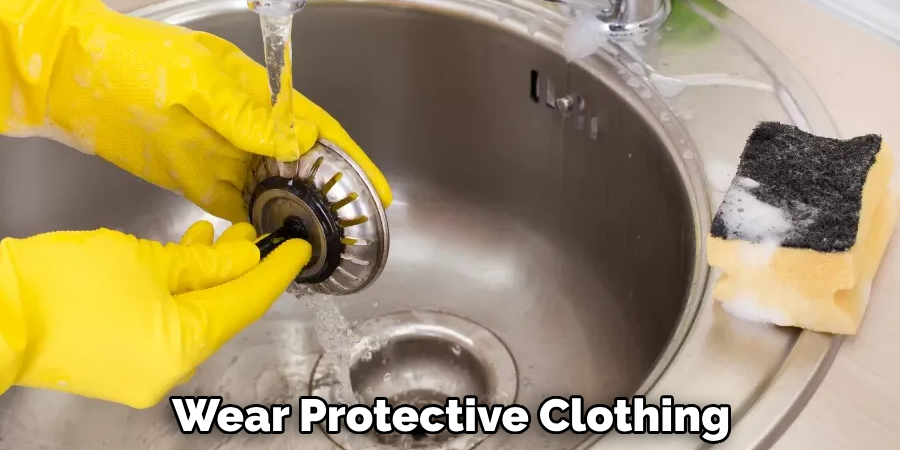
Finally, be aware that certain unclogging techniques may require potentially hazardous items such as a plunger or auger, so follow all safety precautions when operating these devices. If the clog is severe and you cannot safely access it, it is best to call a professional plumber for assistance. A professional will be able to identify the blockage’s source and recommend the best course of action to get rid of it safely.
What Type of Maintenance is Required for Your Floor Drain After It is Unclogged?
Once the floor drain is unclogged, it is important to maintain it regularly to prevent future clogs from forming. The most important step in maintenance is regular cleaning of the trap and pipe. Cleaning the trap should be done at least once a year and more often if necessary. However, do not use harsh chemicals, which can damage the pipes and cause erosion. To clean the trap and pipes, use a mixture of equal parts warm water and vinegar or baking soda.
Depending on the severity of the clog, you may need to use a plumbing auger or snake to reach further down the pipe. Doing so will help remove stubborn debris that is difficult to get with just cleaning solutions.
Another thing you can do to keep your floor drain clear is to make sure it is not blocked by debris or leaves. Be sure to check the area around the drain for any potential blockages and remove them immediately. Additionally, ensure that you’re keeping up with regular inspections of the surrounding areas and pipes so that if a clog does occur, you can address it quickly.
Conclusion
In conclusion, unclogging a floor drain with standing water is achievable when armed with the right tools and knowledge. If your floor drain is blocked, act quickly and safely using the proper techniques to prevent further damage. First, attempt to clear any debris or obstructions from the drain by inserting a snake or plunger into the pipe.
If this does not solve the problem, use a chemical drain cleaner to dissolve greasy clogs and flush the pipe with hot water. Finally, consider calling a professional plumber for help if all else fails. This article has been beneficial for learning how to unclog a floor drain with standing water. Make Sure the preventive measures are followed chronologically.
